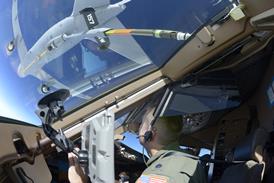RUSSIA LOST its second successive Soyuz U booster on 20 June when a Yantar photo reconnaissance satellite launch from Plesetsk failed at T+50s. The payload shroud was torn off and the engines shut down, the booster crashing 8km (4nm) downrange from Plesetsk.
The failure appears to have been a duplicate of the demise of the previous launch from the Baikonur Cosmodrome, carrying a Kometa reconnaissance satellite, on 14 May. The payload shroud incident on the Baikonur launch occurred at T+49s.
With over 700 flights to its credit, the Soyuz U had the reputation as the world's most successful launch vehicle, once achieving 100 successive successful flights.
Russia has experienced further Soyuz problems, with delays in the production of slightly uprated U2 versions, because of cash shortages, altering the schedule for Mir 1 space station missions. The Soyuz U2 is scheduled to carry the Soyuz TM24 cosmonauts Gennadi Manakov and Pavel Vinogradev to the Mir 1, with a commercial French visitor Claudie Andre-Deshays. This been put back to mid-August, delaying the return of resident TM23 cosmonauts Yuri Onufriekno and Yuri Usachev by 40 days. The TM23 was launched on 21 February.
US astronaut Shannon Lucid, who is working with the TM23 crew aboard the Mir 1, after being delivered to the station aboard the Space Shuttle STS76, will return to Earth aboard the Space Shuttle Atlantis on the fourth Shuttle/Mir Mission, the STS79, on about 9 August, after her 140-day flight. She will be replaced by NASA's John Blaha, who will work with the TM24 crew when it arrives. He will return in December.
Source: Flight International




















